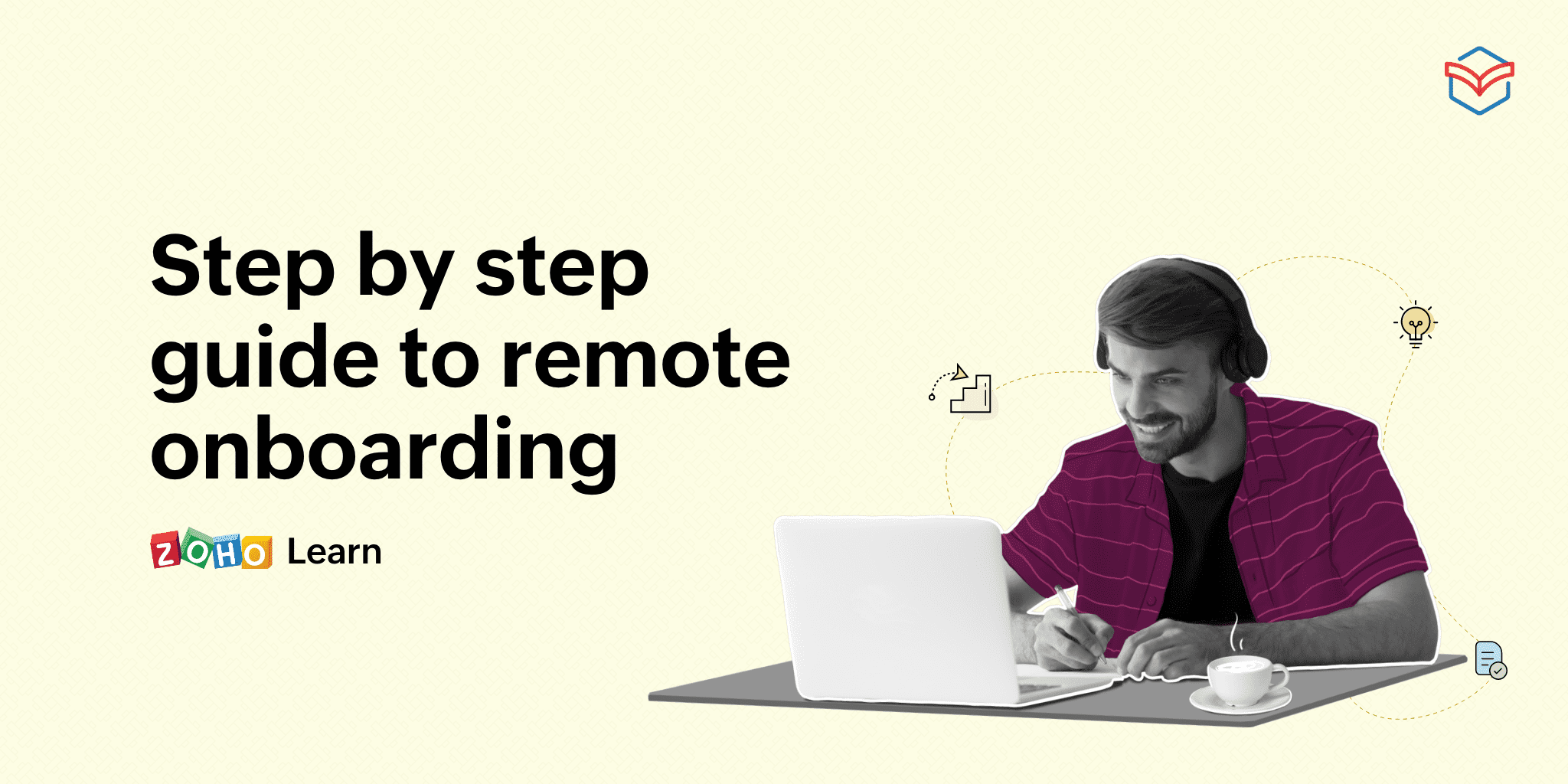Step-by-step guide to remote onboarding
- Last Updated : October 11, 2023
- 697 Views
- 3 Min Read

Hiring the right person that fits the open position and culture of your organization can be a tedious task. However, the real work often comes in keeping employees engaged and retaining them in your organization. An employee's first day can be overwhelming as it involves meeting many new faces, learning new processes, setting up technology, and filling out paperwork. It is the organization's responsibility to create an effective onboarding process for new hires to ensure they get started on the right foot.
What is onboarding?
Onboarding is the process of introducing new hires to your organization. It helps new employees understand the company culture and processes in order to seamlessly integrate into their new team.
How is remote onboarding different from in-person onboarding and training?
Though the steps involved in remote and in-person onboarding programs remain the same, there is a notable difference in how the two are carried out. From meetings to paperwork, every step in the remote process has to be executed online. Your organization needs to come up with a solid onboarding plan and use the right software to ensure your employees feel fully confident in starting their new job.
How to onboard a new employee in a remote workforce?
The COVID-19 pandemic has made onboarding new employees trickier. You can't entirely replicate the process you followed to onboard in-person employees. Your employee onboarding process should be innovative and flexible to adapt to the changes in a remote working environment. To help you through the process, we have created a list of steps to follow to effectively onboard remote employees:
Send welcome emails
Your onboarding process should eliminate the disadvantage of physical distance and make employees feel welcomed and engaged. Send friendly welcome messages with pictures of your team and information about your organization to make them feel included. You can also send them welcome goodies to show how excited you are to have them.
Email onboarding documents
Your employees need to fill out essential paperwork and sign legal contracts on the first day of work. Share onboarding documents before the first day to give new hires extra time to review and sign them digitally without feeling rushed. This will help them focus on the onboarding training on the first day and get acclimatized quickly. Here is a list of documents you need to include in your organization's new employee onboarding checklist:
Employment form
Non-disclosure agreement
Employment offer letter
Employee handbook
Health benefits and pension records
Employee consent form
Ship hardware and setup equipment
Your remote employees should have the same tools they would have if they worked on-premise. Deliver the equipment your employees need before their first day of work. Once they receive their new equipment, help them test everything to ensure they are ready to go.
Deliver an online orientation training
Besides sending the necessary documents and equipment before the first day, it is important to guide employees through the orientation process. Prepare an onboarding session to go over your company culture, processes, and the technology used in your organization. Make the training interactive and answer questions to ensure they are on the same page.
Introduce the team
After completing the HR onboarding, set up a meeting with the manager and the team to give a sense of in-person experience. Every team member can make small introductions to help new hires get to know faces and feel comfortable with their new coworkers.
Create a clear work plan
After onboarding new employees, set up a meeting with their manager to help them understand what’s expected of them and how to carry out their responsibilities. Define short-term and long-term goals to help employees work towards them from the very first day of work.
Provide ongoing on-the-job training
Continuous development throughout their time in your organization is important for an employee's career and personal growth. Train employees on the skills and tools required to perform their job in the workplace. You can also include assignments and quizzes to assess their understanding and growth.
Follow up regularly
Onboarding doesn't end with the first day of work or the first week. Make sure your new employees have all the resources necessary to continue their everyday activities and feel included in your company's culture. Regularly set up meetings and obtain feedback to make them feel their voice and opinions are valued.


